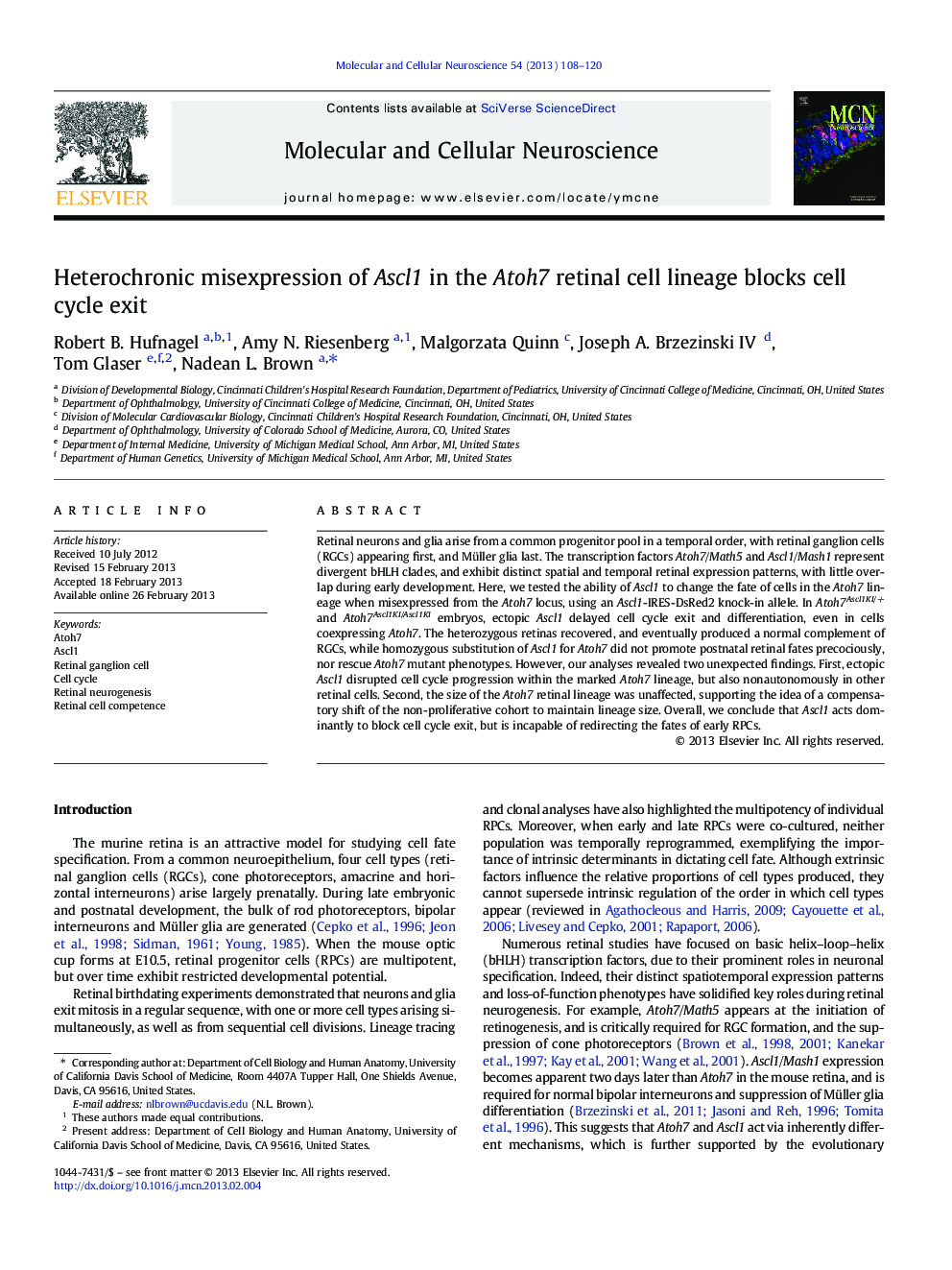| Article ID | Journal | Published Year | Pages | File Type |
|---|---|---|---|---|
| 2198546 | Molecular and Cellular Neuroscience | 2013 | 13 Pages |
Retinal neurons and glia arise from a common progenitor pool in a temporal order, with retinal ganglion cells (RGCs) appearing first, and Müller glia last. The transcription factors Atoh7/Math5 and Ascl1/Mash1 represent divergent bHLH clades, and exhibit distinct spatial and temporal retinal expression patterns, with little overlap during early development. Here, we tested the ability of Ascl1 to change the fate of cells in the Atoh7 lineage when misexpressed from the Atoh7 locus, using an Ascl1-IRES-DsRed2 knock-in allele. In Atoh7Ascl1KI/+ and Atoh7Ascl1KI/Ascl1KI embryos, ectopic Ascl1 delayed cell cycle exit and differentiation, even in cells coexpressing Atoh7. The heterozygous retinas recovered, and eventually produced a normal complement of RGCs, while homozygous substitution of Ascl1 for Atoh7 did not promote postnatal retinal fates precociously, nor rescue Atoh7 mutant phenotypes. However, our analyses revealed two unexpected findings. First, ectopic Ascl1 disrupted cell cycle progression within the marked Atoh7 lineage, but also nonautonomously in other retinal cells. Second, the size of the Atoh7 retinal lineage was unaffected, supporting the idea of a compensatory shift of the non-proliferative cohort to maintain lineage size. Overall, we conclude that Ascl1 acts dominantly to block cell cycle exit, but is incapable of redirecting the fates of early RPCs.
